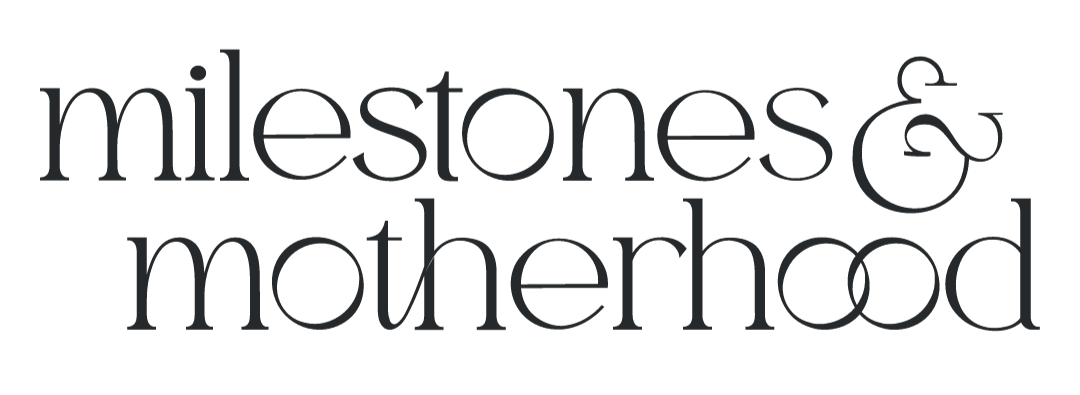Hip Dysplasia 101
Hip Dysplasia is something I truly wish every parent had information on, so within this blog, I’ll break down what hip dysplasia is, what causes it, how to identify it, and what we can do about it.
What Is Hip Dysplasia?
Hip dysplasia occurs when the two bones - femoral head & acetabulum, which create a ball-and-socket joint - don’t quite fit together properly.
It’s when the ball at the top of the thigh bone doesn’t sit correctly in the cup that is part of the pelvis - resulting in instability at the hip joint, which can include subluxing or dislocating.
A great resource for learning more about this condition is the International Hip Dysplasia Institute. They define it as “a general term for infantile hip instability, dislocation, or shallowness of the hip socket. Hip instability and dislocation are more likely to occur during infancy, while a shallow stable socket is more often discovered in adolescence or adulthood.”
Because the first 6 months of life are a huge period of hip joint development for a baby, it is important to ensure that we’re protecting their hip development through proper positioning in things like baby carriers, swaddles, and providing as much free floor play as possible.
Contributing Factors, Diagnosis & Treatment of Hip Dysplasia
Potential Contributing Factors of Hip Dysplasia
Breech babies (in-utero positioning)
Family history of hip dysplasia
Low muscle tone
Overly restrictive swaddling of the hips/legs straight down
Excessive supported standing with legs/hip straight down (similar to the swaddled position mentioned above) prior to a child being able to stand on their own
Signs of Hip Dysplasia In Babies and Children
Before going into common signs of hip dysplasia, please note that this is not an all inclusive list - nor does this list diagnose your child with hip dysplasia. If your child is showing any of the common signs below, please bring that to your pediatrician’s attention.
In infants:
Clicking of the hips when performing specific testing (done by medical professionals) and/or noted by parents during diaper changes is often the first sign
Asymmetrical folds of the butt
Differences in leg length
After infancy:
Limping
Difficulty weight bearing
Pain in the hips and/or low back
Arthritis in adulthood
How does a baby or child get diagnosed with hip dysplasia?
Typically after potential hip dysplasia is identified, referral for imaging is made.
If a child is UNDER 6 months of age, referral for a hip ultrasound is often given.
If a child is NEAR or OVER 6 months of age, a referral for a hip x-ray is often done.
My child has hip dysplasia, now what?
Monitoring
Bracing
Casting
Surgery in extreme cases
The Impact of Proper Positioning
To promote hip health when baby-wearing, we want baby facing you (not outwards), and to aim for the legs to be in what is referred to as the “M” position. Think of the bottom points of the M being the feet (on either side), and their bottom (in the middle). The upper points of the M would be their knees.
This positioning encourages the most congruent position of the thigh bone and hip (which make up the hip joint), and supports healthy hip joint development.
Similarly, when swaddling a baby, allowing legs to move freely into bent hips and knees (often spread apart as well), which is called hip and knee flexion, and hip abduction, encourages ideal hip alignment.
Finally, because baby “containers” like exersaucers encourage legs to be straight down into extension and adduction, which is essentially the opposite of the ideal hip position described above, avoiding them for the first 6 months of life when possible is recommended.
More Information on Hip Dysplasia
To summarize now that we’ve outlined more information about hip dysplasia, how it is detected, diagnosed and treated, AND how to position in a way that encourages healthy hip development, here are some final tips to keep hips healthy!
The International Hip Dysplasia Institute has an amazing, extensive (though not all inclusive) reference of Hip Healthy Products (baby carriers and swaddles).
If you have any questions or concerns (including noting any clicking or clunking of baby’s hips), don’t ever hesitate to speak with your pediatrician.
Refer to this collaborative post with Expecting and Empowered on babywearing for more alignment AND posture for parents while babywearing.
Check out my post on exersaucers and general guidelines for standing containers for babies.
Looking for an exersaucer for your baby? You can find my favorites here.
Learn more about when babies should be bearing weight through their legs in this post.
Read BioMedical’s article Hip Joint: Embryology, Anatomy, and Biomechanics
I truly hope this information helps empower you with knowledge about hip dysplasia, supporting hip health, and as always - if you have any concerns or questions about your child’s development, don’t hesitate to speak with your healthcare team!
Want more?
For developmental questions, tips and guidance related to milestones about tummy time, rolling & sitting, crawling and walking, check out KC’s developmental Masterclasses linked here.
Was this helpful? Save it for later!
KC is a pediatric doctor of physical therapy, wife and mom of three! She has spent her career working with children and young adults of all ability levels, and currently specializes in birth to three years.








